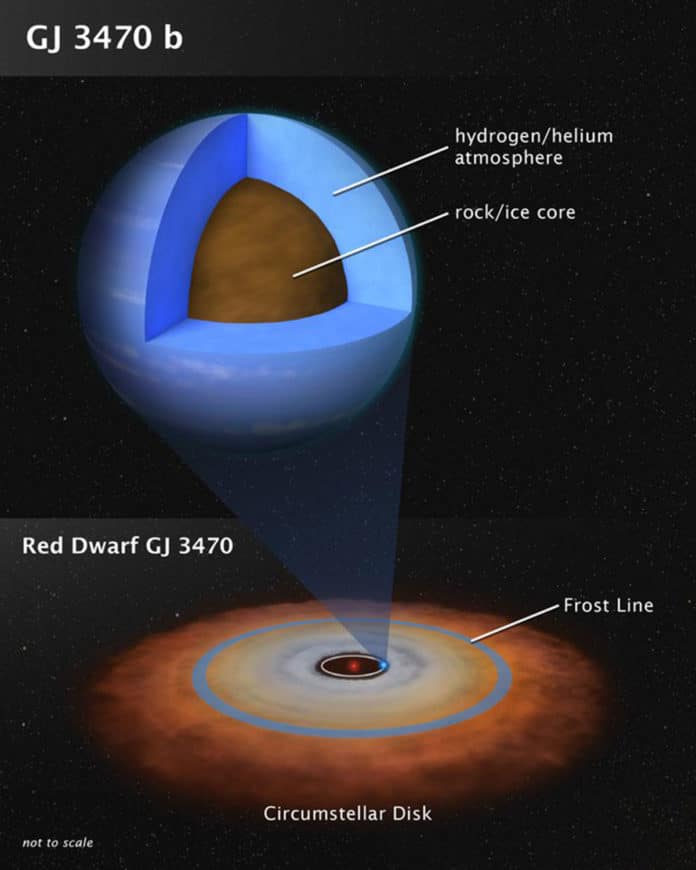For the first ever time, a team of scientists have analyzed the chemical composition of the atmosphere of a new class of exoplanet, called GJ 3470 b, whose mass is 12.6 times that of Earth, but somewhat less than that of Neptune, which weighs in at 17 Earth masses.
Scientists found that the exoplanet has a rocky core buried under a deep, crushing hydrogen and helium atmosphere. Eighty percent of the planets in our galaxy has similar mass and size range, but astronomers have always been unable to comprehend the chemical nature of the environment of such a planet until now.
Université de Montréal astronomy professor Björn Benneke, who led the study, said, “We expected to find an atmosphere strongly enriched in heavier elements like oxygen and carbon that create abundant water vapor and methane gas. Instead, we found an atmosphere that is so poor in heavy elements that its composition resembles the hydrogen- and helium-rich composition of the sun.”
The most plausible explanation, according to Benneke, is that GJ 3470 b was born precariously close to its red dwarf star, which is about half the mass of our Sun. He hypothesizes that mostly it started as a dry rock, and rapidly accreted hydrogen from a primordial disk of gas when its star was very young. The disk is called a “protoplanetary disk.”
Caltech planetary scientist Heather Knutson said, “We understand the planet better when we observe its atmosphere using more than one technique; this is particularly true for planets with high-altitude clouds, which usually only affect select regions of the atmosphere.”
An analysis of the new planet was published in Nature Astronomy on July 1.
